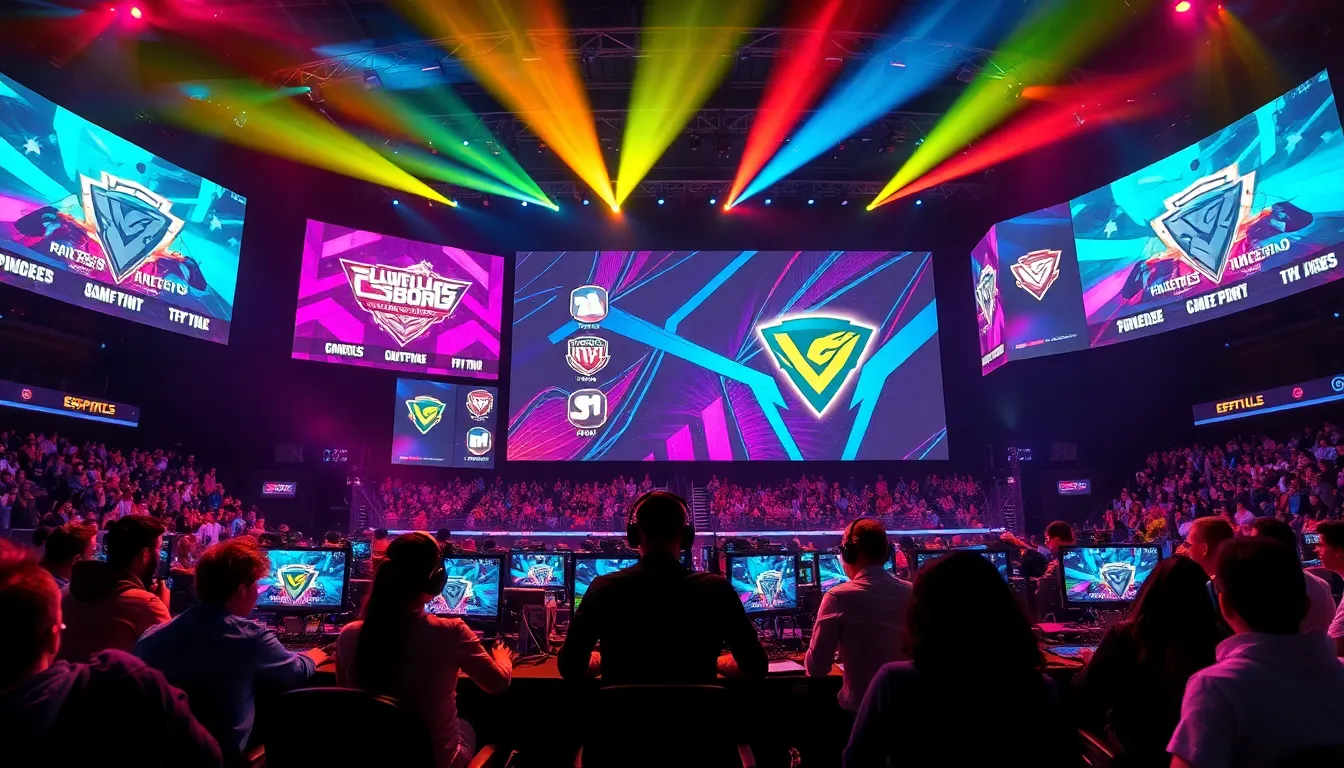Esports has quickly transformed from a niche hobby into a global phenomenon, captivating millions around the world. But what’s often overlooked? The electrifying atmosphere created by the esports stage. Picture this: bright lights, massive screens, and the roar of passionate fans. It’s not just a backdrop: it’s the very pulse of competitive gaming. Here, we will investigate into the evolution, design, technical nuts and bolts, and future trends of esports stages, all while keeping it as engaging as a tense final match. Ready to immerse? Let’s unpack what makes these stages the real MVPs of esports.
esports stage

Esports stages have come a long way since their humble beginnings. Initially, these stages resembled nothing more than a simple setup in a garage or a community center. As the popularity of esports surged, so did the ambition behind stage design.
The Early Days
In the beginning, events were small gatherings, often with makeshift setups. Players competed on basic tables with minimal lighting, and the audience was usually friends and family members. But that quaint atmosphere soon transformed as esports gained traction.
Rise of Professionalism
As leagues like League of Legends and Dota 2 began to draw larger crowds, event organizers had to rethink their approach. Suddenly, it became crucial to create a stage that matched the grandeur of the competition. Professional esports tournaments began to prioritize stage design, integrating multimedia elements to enhance the viewer experience from both on-site and online perspectives.
Modern Marvels
Fast forward to today, and esports stages are masterpieces of engineering. Venues like the Staples Center and The O2 Arena showcase not just a physical setup but also advanced technology, providing a sensory overload with stunning visuals and sound effects. The evolution reflects not only the growth in audience size but also how seriously the industry takes its productions.
Design Elements of an Esports Stage
A well-crafted esports stage goes beyond mere aesthetics. It’s an amalgamation of creativity, technology, and strategic planning. Designers consider various elements to create an immersive experience for everyone involved.
Layout Considerations
When designing an esports stage, layout is critical. Organizers must decide where players will compete, audience seating arrangements, and camera placements. A typical setup often includes a prominent player area, audience zones, and multiple vantage points for filming. This ensures visibility for both live spectators and online viewers, optimizing the spectator experience.
Visual Impact
The visual components cannot be understated. Large LED screens, dynamic lighting systems, and thematic decor play pivotal roles. Designers often draw inspiration from the games being played to create an atmosphere that resonates with fans. Incorporating brand colors, logos, and game art into the design further enhances the connection between competitors and spectators, making every event a vibrant spectacle.
Audience Interaction
Esports stages are unique because they’re not just about the players: they also cater to the audience. Interactive elements like fan zones, merchandise booths, and even the chance to meet players add layers of engagement. Gamification of the spectator experience creates buzz, driving excitement both in the venue and online.
Technical Requirements for Esports Stages
Behind the glamorous visuals and electrifying atmosphere lies a set of technical requirements essential for the success of any esports event. From audio-visual systems to network stability, every detail matters.
Audio-Visual Systems
Massive screens delivering high-definition visuals are just the tip of the iceberg. State-of-the-art projectors, monitors, and visual effects software are standard in today’s esports arenas. These elements are vital for keeping audiences engaged, as they allow everyone to follow the action closely, regardless of where they’re seated.
Reliable Internet Connection
An infallible internet connection is crucial. With multiple players, cameras, and streaming devices vying for bandwidth, robust network solutions are a must. Organizers often install dedicated connections, ensuring seamless streaming and real-time updates for millions of online viewers. Also, many setups include backup systems to mitigate any possible failures during critical moments.
Safety Features
Safety should never be an afterthought. Ensuring all electronic equipment is properly secured, while having a clear emergency exit strategy, is essential for large-scale events. Also, accessibility considerations should be factored in, making the venue welcoming for everyone.
Impact of Audience Engagement on Esports Stage Design
One of the primary goals of any esports stage is to engage the audience, both live and online. An effective stage design elevates the spectator experience and builds a sense of community around the game.
Signage and Branding
Strategic branding plays a significant role in audience engagement. Effective signage not only directs fans around the venue but also adds to the overall atmosphere. Game-themed displays can increase excitement, and sponsor activations encourage audience interaction, keeping energy levels high throughout the event.
Live Audience Integration
Being in a live audience is an exhilarating experience. Designers often carry out features like fan shoutouts on screens or real-time polls to involve spectators. Such elements keep fans engaged and contribute to a sense of unity, making their presence felt even beyond their cheers. Don’t underestimate the power of a well-timed “Go Team.” displayed on a massive screen during critical moments.
Social Media Interaction
In our digital age, social media buzz amplifies any event. Many esports stages now incorporate interactive elements that connect to social platforms. Live feeds of Tweets or Instagram posts can enhance the viewing experience, making spectators feel part of something larger. This integration effectively intertwines the online and offline experiences, fostering community among fans.
Future Trends in Esports Stage Design
As esports continue to grow, so does the creativity behind stage design. The future holds exciting possibilities that are bound to change the landscape of competitive gaming.
Immersive Technology
Expect to see an increase in virtual and augmented reality segments. Imagine stepping into a hybrid venue where digital elements merge seamlessly with physical components. These technologies will create a more immersive experience while allowing audiences to engage with the event in entirely new ways.
Sustainability in Design
With growing awareness around environmental issues, sustainability will influence stage designs. Future venues will likely incorporate eco-friendly materials and energy-efficient technologies, ensuring the gaming community is also responsible. Imagine stages that can adapt and change while being gentle on the planet.
Personalization of Experiences
The trend towards personalization is poised to make waves in stage design. Picture events where fans can tailor their experiences, choosing camera angles, accessing exclusive content, and even participating in after-show events. This level of personalization will enhance audience satisfaction while promoting long-term loyalty.

